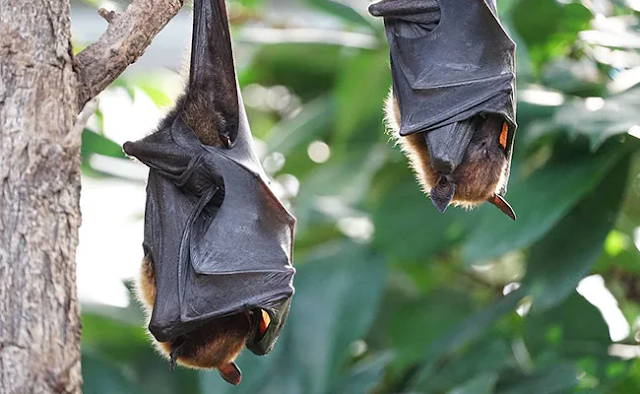NeoCov explain
Explained NEOCOV — what it is and what it is not
Multiple reports went viral over Thursday and Friday claiming Chinese researchers had found a coronavirus called NeoCoV that was on the verge of causing a new high-fatality pandemic, turning what was hypotheses typical of scientific lab studies into sensationalist doomsday predictions.
 |
| A team of Chinese researchers found a new kind of coronavirus, NeoCov, among bats in South Africa. |
Virologists the world over explore multiple theories and test them using certain assumptions, engineered pathogens and modified cells made to represent a certain attribute or the other.
A type of coronavirus, NeoCov, that spreads among bats in South Africa may pose a threat to humans in future if it mutates further, according to a study by Chinese researchers.
The yet-to-be peer-reviewed study recently posted on the preprint repository BioRxiv, shows that NeoCov is closely related to the Middle East respiratory syndrome (MERS), a viral disease first identified in Saudi Arabia in 2012.
Coronaviruses are a large family of viruses that can cause diseases ranging from the common cold to Severe Acute Respiratory Syndrome (SARS).
Researchers from Chinese Academy of Sciences and Wuhan University noted that NeoCov is found in a population of bats in South Africa and to date spreads exclusively among these animals.
In its current form, NeoCov does not infect humans but further mutations may make it potentially harmful, the researchers noted.
"In this study, we unexpectedly found that NeoCoV and its close relative, PDF-2180-CoV, can efficiently use some types of bat Angiotensin-converting enzyme 2 (ACE2) and, less favourably, human ACE2 for entry," the authors of the study noted.
ACE2 is a receptor protein on cells that provides the entry point for the coronavirus to hook into and infect a wide range of cells.
"Our study demonstrates the first case of ACE2 usage in MERS-related viruses, shedding light on a potential bio-safety threat of the human emergence of an ACE2 using "MERS-CoV-2" with both high fatality and transmission rate," they said.
The researchers further noted that infection with NeoCov could not be cross-neutralised by antibodies targeting SARS-CoV-2 or MERS-CoV.
"Considering the extensive mutations in the RBD regions of the SARS-CoV-2 variants, especially the heavily mutated Omicron variant, these viruses may hold a latent potential to infect humans through further adaptation," the authors of the study added.
A receptor-binding domain (RBD) is a key part of a virus that allows it to dock to body receptors to gain entry into cells and lead to infection. The reports began snowballing following an initial story by Russian news agency Sputnik, which reported on a pre-print study, or yet to be peer-reviewed paper.
It spoke of two coronaviruses, NeoCoV and PDF-2180-CoV that researchers from China said were like the Middle Eastern Respiratory Syndrome (Mers) coronavirus.
Their lab studies showed that if NeoCoV picks up a certain mutation, it could use the same pathway to infect humans as the Sars-CoV-2 virus.
The focus of the study is based on a simple premise: If NeoCoV picks up a particular mutation, can it become a larger threat?
It is important to understand the nature of such studies.


Comments
Post a Comment